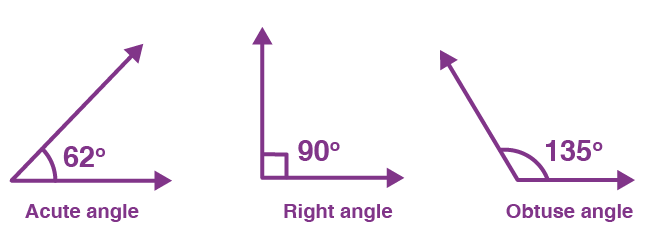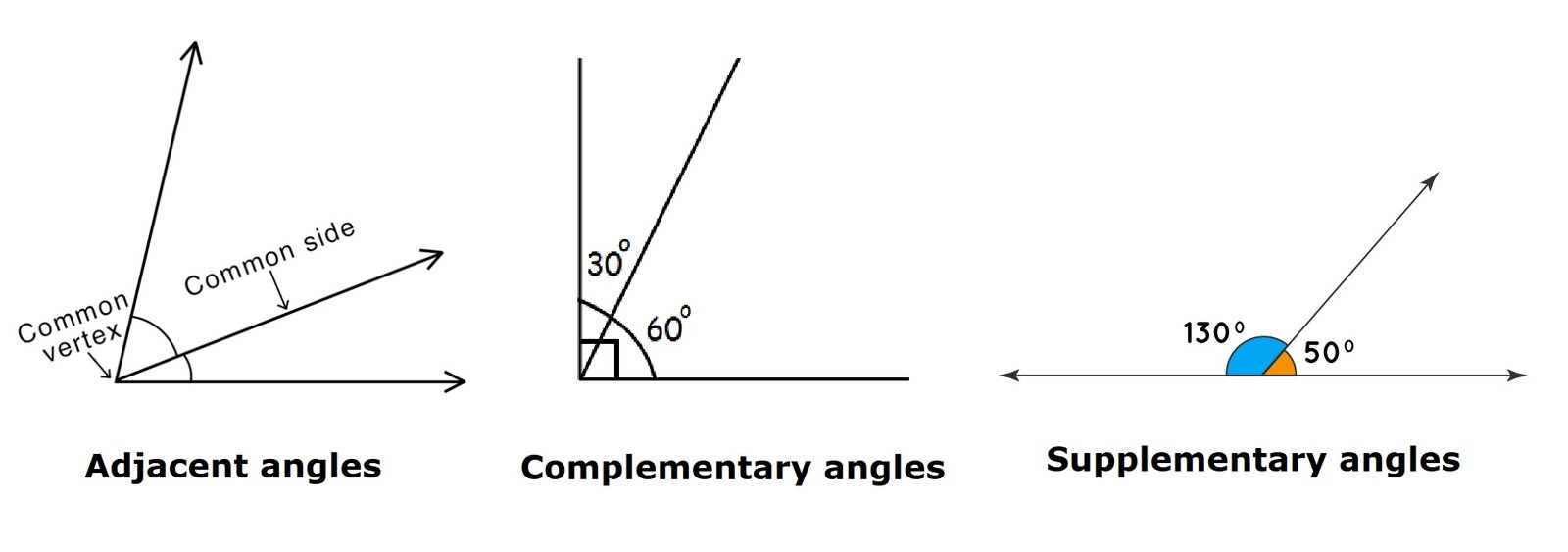Show List
Lines and angles
Lines and angles are important concepts in geometry.
A line is a straight path that goes on forever in both directions. It has no thickness and no end points. Lines can be represented by a straight mark on a piece of paper.
An angle is formed when two lines meet at a point. The point where the lines meet is called the vertex of the angle. The two lines that form the angle are called the arms of the angle. The size of an angle is measured in degrees. A full circle is 360 degrees and a right angle is 90 degrees.
There are different types of angles, such as:
Acute angles
: An angle that measures less than 90 degrees.Right angles
: An angle that measures exactly 90 degrees.Obtuse angles
: An angle that measures more than 90 degrees but less than 180 degrees.
Straight angles
: An angle that measures exactly 180 degrees.Reflex angles
: An angle that measures more than 180 degrees but less than 360 degrees.You can also classify angles by there relative position:
Adjacent angles
: Two angles that share a common vertex and a common side but have no interior points in common.Complementary angles
: Two angles whose sum is 90 degrees.Supplementary angles
: Two angles whose sum is 180 degrees.
Lines and angles are related concepts and can be used together in different shapes such as triangles and polygons.
Leave a Comment